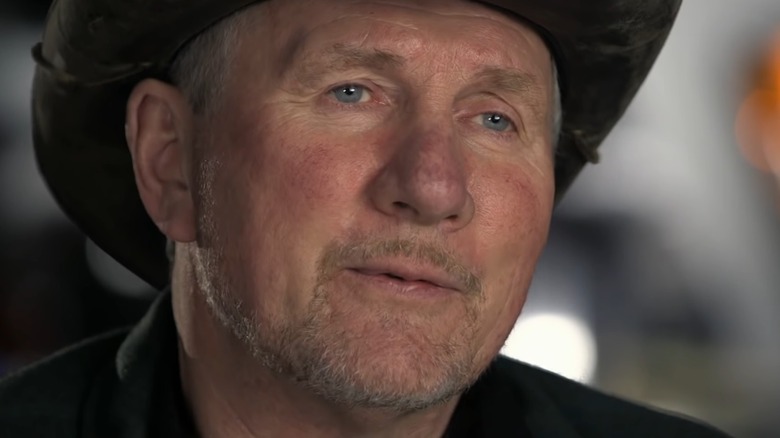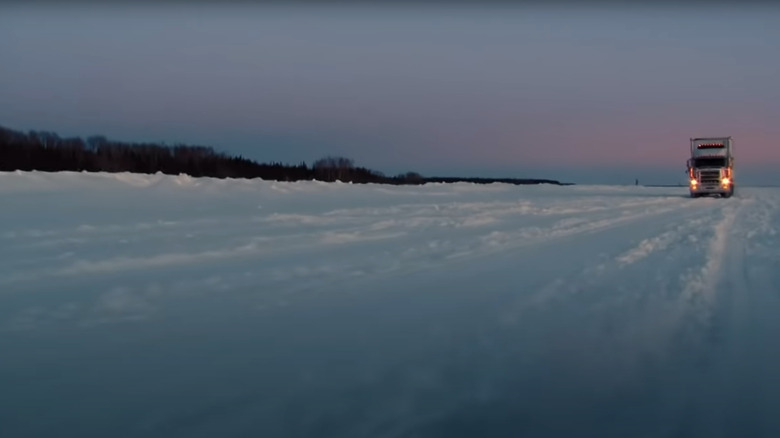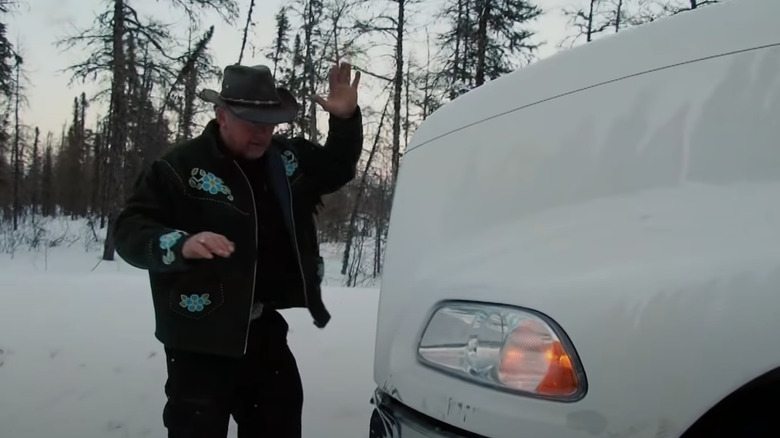Ice Road Truckers' Alex Debogorski Explains Why The Best Time To Drive Is At Night
Truck driving, even in the best of conditions, can be a dangerous profession. According to IIHS, there were 4,104 fatalities involving large trucks in 2020, which was an increase of 28% from 2009. This could be due to a multitude of reasons, which may include long work hours and hazardous weather conditions. Speaking of long work hours and inclement weather, History Channel's "Ice Road Truckers" takes the already imposing profession and ramps it up to 11 by following professional truck drivers in some of the most inhospitable places in the world, namely the areas around and approaching the Arctic Circle.
Alex Debogorski is one of the brave truckers featured on the aforementioned television series. His website notes that he was born in Berwyn, Alberta, and now currently resides in Yellowknife, which is part of Canada's Northwest Territory. He has been married since 1972, and has 11 children. Alex was originally recruited to "Ice Road Truckers" when producers went in search of people in the Northwest Territory and were told specifically about Alex and his personality, as well as his capacity to tell stories. These aspects helped make Alex one of the most prolific characters on "Ice Road Truckers," and his years of experience and familiarity with Arctic climes means that he is somewhat of an authority on the subject of using frozen bodies of water as an ersatz road.
Debogorski says driving is easy at night because of the contrasts and reflectors
In a 2014 interview with Alex Debogorski on YouTube, Alex was asked why driving at night is the easiest time on ice roads, and he had a rather straightforward answer. He replied, "Generally, it's the contrast between light and shadow and the snowbanks, and you see where you are on the road. In northern Alaska, they tend to have delineators — they have, you know, basically a stick on each side of the road with a reflector on it."
He continued, "Which is interesting because the one side is a yellow reflector, and the other side is a white reflector. So if we go into a ditch and the wrong reflector passes you on the passenger or driver's side, you know you've gone into a snowbank." Thinking about the general conditions one must experience while traversing a desolate and snow-blanketed landscape, this actually makes sense. In the blinding light of day, the reflection upon the snow probably obscures many obstacles. However, this absence of light is probably a boon at night, because suddenly everything is cast in a potent contrast — just think of any time you may have driven on roads surrounded by snow at night. The black of asphalt sticks out quite prominently against the white of snow. Although people like Alex may not have the liberty of traveling on a tried and true paved road most of the time, the concept remains the same.
Truck driving is statistically safest at night
Oddly enough, truck driving at night is actually one of the safest times for truckers, though that probably doesn't account for the extreme circumstances and environment in "Ice Road Truckers." According to Fried Goldberg LLC, 65% of truck related fatalities occur between 6 a.m. and 6 p.m., while the safest time for truckers is actually the three hours following midnight. This can be due mainly to traffic and general congestion, because an accident is far less likely to happen if there isn't anybody else on the road. This is probably even more pronounced on remote ice covered roads and bodies of water because there probably isn't a whole lot of people driving around at night above the 60th parallel.
Although over the tenure of "Ice Road Truckers" none of the truckers truly suffered from cataclysmic accidents, The Biography notes that several injuries and two fatalities occurred off-set, with one fan attempting the profession and meeting with tragic results, and a star of the show, Darrell Ward, who unfortunately crashed his small plane. Still, if one ever attempts to engage in the same profession as those on "Ice Road Truckers," it sounds like driving at night is the safest bet. Well, as safe as one can be while driving on remote ice roads across frozen lakes and rivers.


